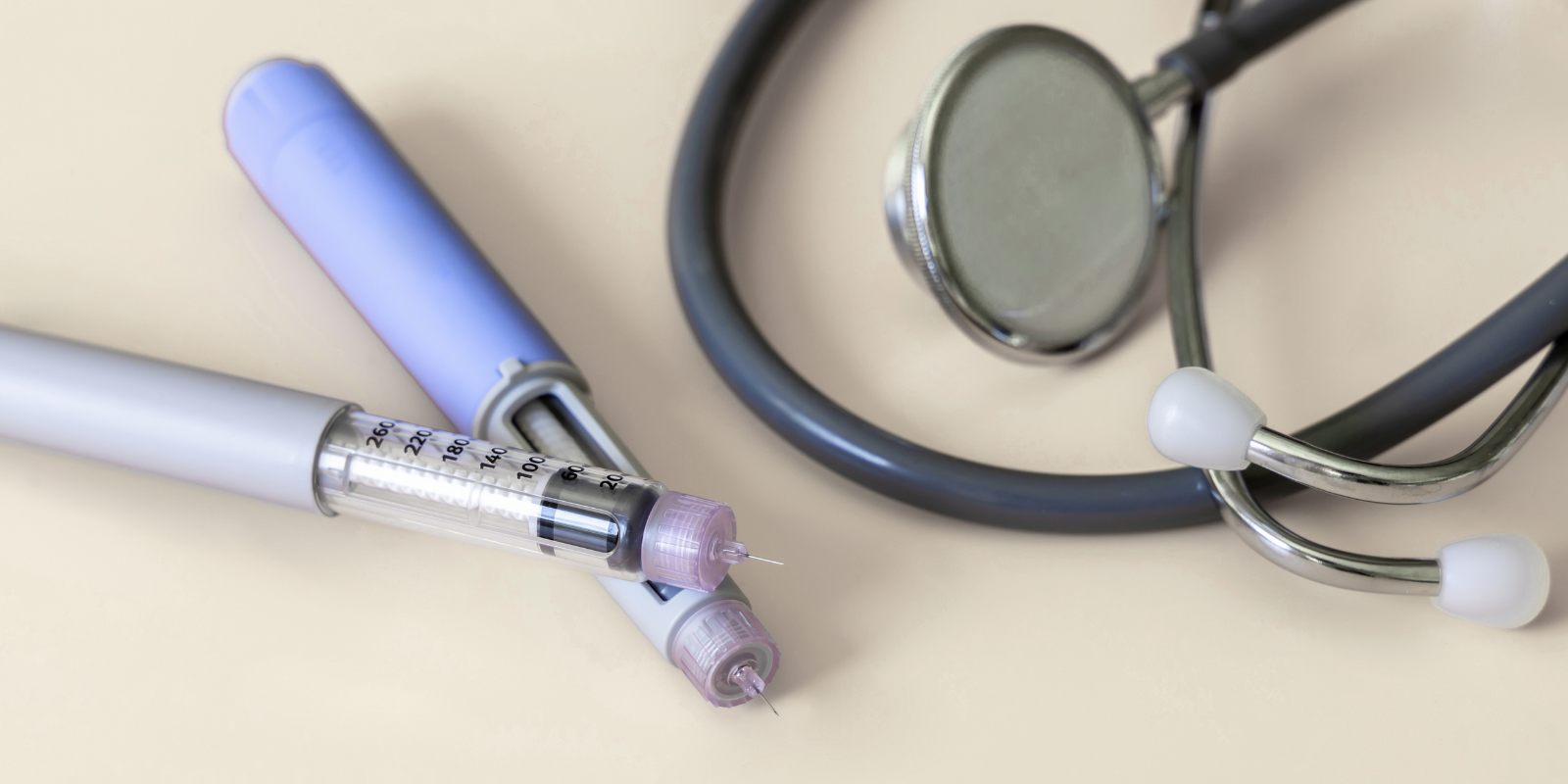Although the treatment and management of Crohn’s disease — a type of inflammatory bowel disease — has improved over time, many people with this illness still face a risk of the disease coming back even after getting surgery to remove it. And up to 50% of the time, these individuals will have to get a second surgery to manage the disease.
Hoping to change this, experts like Benjamin Click, MD, MS, a clinician and researcher in the University of Colorado Department of Medicine, are working to advance research to improve how doctors monitor and care for these patients.
“Crohn’s disease is one of the few opportunities, at least in the diseases I routinely deal with, where we can see the disease form and evolve in front of our eyes,” said Click, an assistant professor in the CU Division of Gastroenterology and Hepatology, during a recent Medicine Grand Rounds presentation.
“Oftentimes, we make the diagnosis of a disease when it's already existing, and we implement treatments to help manage it. But this is a disease where we have an opportunity to alter its natural history and progression,” he added. “We’re always looking to learn and do better, because this is a high-risk patient population that deserves our best efforts.”
Surgery is common for Crohn’s disease patients
Crohn’s disease causes inflammation in the digestive tract, often affecting the small intestine and beginning of the large intestine. This chronic disease can begin gradually and worsen over time, with symptoms such as abdominal pain, diarrhea, fatigue, weight loss, and malnutrition.
“It’s a lifelong illness, and we do not have a cure for it,” Click said. “Unfortunately, surgery is historically very common. It’s estimated that within 10 years of a diagnosis, approximately 26% of individuals with Crohn’s disease will require some sort of surgical intervention to help manage their disease.”
Typical reasons for surgery include disease-related complications, such as intra-abdominal abscesses (collection of pus or infected fluid), intra-abdominal fistulas (abnormal opening that can lead to fluids leaking into other parts of the body), medically refractory inflammation (ongoing inflammation despite intervention), or the development of neoplasia (a tumor) or dysplasia (abnormal growth of cells).
The most common surgery is an ileocecal resection. This involves the removal of the diseased segment of the terminal ileum (the end of the small intestine), the cecum (the beginning of the colon), and the appendix. The surgeons then reconnect the proximal colon to the distal small bowel.
“Generally, after surgery, these individuals are macroscopically and microscopically free of Crohn’s disease — a state of surgically-induced remission,” he said. “The unfortunate reality in Crohn’s disease is that surgery is not curative. Crohn’s disease tends to recur in the majority of people who undergo surgery.”
Within a week of surgery, there can be microscopic signs of recurrence of the disease in patients, he explained. Yet, the number of people who experience signs and symptoms of the recurrence — referred to as the “clinical recurrence” of the disease — is relatively low.
“The recurrence of disease activity is often clinically silent. If we sit and wait for these symptoms to develop, we’re catching it too late,” Click said, underscoring the need to closely monitor postoperative patients. “Unfortunately, if left to its own devices, up to 50% of individuals who get surgery to manage their Crohn's disease will require a second surgery.”
Determining who is high risk
One of the questions researchers aim to address is determining which populations are at a higher risk of experiencing a recurrence of Crohn’s disease following surgery.
“There’s an element of needing to be able to predict this patient population. Whose disease comes back the earliest, whose comes back with the most aggressive form, and who are the 50% who would need a second surgery?” Click said.
He explained the American Gastroenterological Association established guidelines that define both lower-risk and higher-risk patient populations. Typically, patients who are at a higher risk for recurrence of Crohn’s disease following surgery are people who were diagnosed under the age of 30, people who are active smokers either at the time of surgery or after surgery, and people who have had prior surgeries for Crohn’s disease.
The lower-risk population are generally patients who were diagnosed above the age of 50, non-smokers, those who are having their first surgery for Crohn’s disease, and those whose disease has taken at least 10 years to progress to the point that surgery is needed.
However, these risk factors focus on the clinical characteristics of patients, he said, pointing to the need for further research of other potential risk factors. For example, some researchers are looking at how histologic parameters (meaning the microscopic study of the body’s organs and tissues) and surgical complications may be indicators of disease recurrence.
The body’s microbiome — meaning the community of microorganisms like fungi, bacteria, and viruses that live in the body — is another area researchers are exploring. For instance, some data from research conducted in Europe indicated that if a patient has a specific adherent invasive E. coli present in their microbiome at the time of their surgery for Crohn's disease, they may be at a higher risk of the disease recurring after surgery. However, more research in this area is needed, he explained.
“By incorporating some of these novel dimensions and modalities, we can perhaps improve our predictive ability,” Click said, explaining there is value in combining different types of parameters, such as clinical and microbiome parameters, in determining risk factors. “This combination leads to more evidence. It allows us to have a higher degree of certainty when we make these risk stratifications.”
The value of medical therapies
Beyond determining the risk factors, researchers like Click are also trying to determine how doctors can best intervene and prevent the disease from progressing.
Studies have found that antibiotics can be valuable, though they have some downsides. One study tested the effectiveness of an antibiotic called ornidazole. Starting within one week of surgery, patients with Crohn’s disease took a gram of ornidazole every day for a year following surgery.
“This randomized trial showed us that there is a significant reduction in the endoscopic recurrence of Crohn’s disease within one year of surgery,” he said. “The unfortunate problem with this approach, especially with this particular class of antibiotics, is tolerance. There is a high rate of side effects, and the benefit is very temporary. As soon as the antibiotic is withdrawn, we see a rapid recurrence of that natural progression of Crohn’s disease.”
There are a variety of different medicines that are approved to treat Crohn’s disease, but there is a lingering question of whether these medications can prevent the recurrence of the disease following surgery, he explained. One study tested the medicine infliximab on patients who underwent an ileocecal resection and have a higher risk for developing recurrent Crohn’s disease. Infliximab is part of a class of drugs called anti-tumor necrosis factor (anti-TNF).
“In that study, we saw a nearly 50% reduction in the endoscopic recurrence of Crohn’s disease following surgery if they were treated immediately with infliximab,” he said. “But it’s not unique to infliximab. Other research has found that across the anti-TNFs, we see a significant risk reduction. Research has also found that the medication vedolizumab also appears to reduce endoscopic recurrence.”
However, this therapy intervention may be influenced by time.
“Our group looked at when a patient actually started a therapy postoperatively, and it showed us that it was really important, especially for the highest risk population, that they start the medication within four weeks to really see the clinical benefit, particularly with anti-TNFs,” he said. “Overall, early postoperative prophylaxis with anti-TNFs and vedolizumab can reduce endoscopic recurrence and hopefully start to alter, or at least delay, the disease progression.”
Improving monitoring methods
Not necessarily everyone should start these medications after surgery, Click cautioned. Instead, he recommended a risk-stratified approach, where the individuals who are at the highest risk are those who have postoperative medications while the people who are at a lower risk of disease recurrence follow “endoscopically-guided monitoring.”
This means these lower-risk patients will not get postoperative medications and will instead have a colonoscopy six months after their surgery. If the colonoscopy shows evidence that the disease is active again, then those patients will start the medications.
“That brings us to our next dilemma: How do we actually monitor, grade, assess, and react to disease activity in this setting?” Click asked.
Most patients do not want to undergo colonoscopies every six months, as it is an invasive and costly procedure, he explained. To address this, researchers have been working to identify non-invasive monitoring methods, such as looking at images from MRIs and measuring the levels of fecal calprotectin in a person’s stool as a way to determine if a colonoscopy is needed or not.
“We still rely on endoscopic monitoring as our gold standard to guide postoperative management, but we’re starting to see this transition toward non-invasive monitoring,” he said.
Continuing the work
In the big picture, the postoperative management of Crohn’s disease has improved for patients.
“We’re doing better. One study of a European population-based cohort found that the most modern cohort, encompassing 2012 to 2020, is seeing a significant reduction in requiring repeat surgery for management of Crohn’s disease,” Click said. “But the data shows that even if we achieve our short-term outcomes — if we do the surgery, we scope our patient, and the scope is completely normal — there is nearly a 50% risk that those individuals will subsequently later go on to develop a disease recurrence.”
It begs the question of how researchers can identify these patients and better predict who will experience this late recurrence, he explained.
“Our group looked at a patient population of people who had a completely normal colonoscopy — no ulcers, no inflammation even to a small degree — and were biopsied,” he said. “We found that individuals who had evidence of histologic disease activity on those biopsies were an at-risk population, as there was more than a two-fold increased likelihood that those people would go on to develop a late postoperative recurrence.”
Looking ahead, Click believes clinicians and researchers are moving away from using simple clinical parameters as risk prediction tools for Crohn’s disease recurrence. Instead, they are moving toward multidimensional evaluation methods that include factors like the microbiome and studying the body’s tissues to develop more individualized risk scores.
“This is a collaborative disease. We need medical, surgical, histology, pathology, and radiology experts to help guide us,” he said. “We have a lot of lessons to be learned.”




